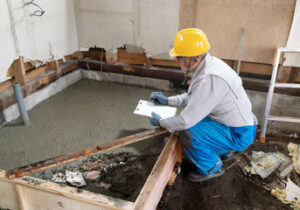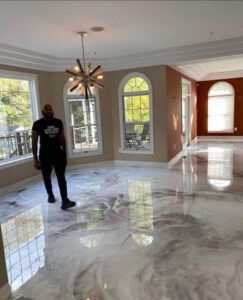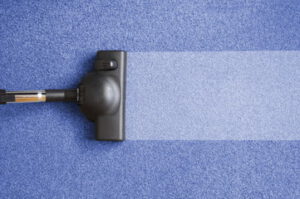Concrete is durable, but it can take a beating over time. Tree limbs can fall and crack the surface; roots growing near the driveway can force bricks upward; and a lack of proper drainage can cause areas to sink or lift.
Hiring a professional contractor like Paving Companies Charleston SC ensures the job is done properly and to your satisfaction. Practice preventive maintenance, compare quotes, consider cost-effective materials, and request references to lower repair costs.

Cracks in driveways and other concrete surfaces range from surface-level crazing to deep apertures that extend through the entire slab. They may look unsightly but are usually harmless if they’re no wider than the width of a credit card and do not show signs of structural movement or shifting of the ground underneath. Nonetheless, it’s important to address them quickly because they can cause water to seep into the concrete, which weakens it and causes further damage over time.
Fine surface lines up to 1/8 inch in width, often described as crazing or spider web-like, result from shrinkage and minor settlement. These cracks do not indicate any underlying problems and can be repaired with an elastomeric crack filler applied with a caulking gun.
Wider fissures require more extensive repairs and signs that your concrete or asphalt needs replacing or patching. They’re more expensive to repair and will likely need to be widened using an angle grinder or diamond wheel before you can fill them with an epoxy crack sealant.
Before you apply crack filler to your driveway, it’s a good idea to choose a sunny day with no rain in the forecast for at least 24 hours so that any dirt or weeds that have grown into the cracks can be washed away and the filler can set correctly. It’s also a good idea to clean out the cracks, which should be done with a screwdriver or 5-in-1 tool to ensure that any debris is removed and that you’re applying the crack filler to an even, smooth surface.
If the cracks in your driveway are wider than the width of a credit card or extend to the depth of the concrete, they’re considered structural cracks and should be repaired or replaced as soon as possible. The natural movement of the earth causes structural cracks. They can be exacerbated by seasonal changes, heat expansion, freezing and thawing cycles, or poor installation that allows the ground to shift beneath your driveway. A qualified professional should examine these cracks to determine if your driveway is at risk of further damage and what repair options are best for your situation.
A hole in a driveway is a real car hazard and a major eyesore. If left untreated, it can get bigger and cause damage to vehicles driving over it. You can easily fill holes using a cold asphalt patch (called blacktop repair).
Before starting the actual hole, using a pressure washer to remove loose debris and dirt is a good idea. This will allow you to get a better view of the hole and how big it is.
You should also heat the asphalt surface surrounding the hole with a flame torch. This will help bond the patch aggregate with the existing asphalt and make your repairs last longer. Just be careful not to overheat the surface, or you may damage the oils in the asphalt and cause more problems down the road.
After cleaning the hole, you should add crushed gravel as a base for your patch material. This will prevent water from seeping into the subgrade and causing more problems. Then, you can start putting in your patch material.
Your large pothole will probably sag a bit as vehicles drive over it. This is why you need to fill it a little higher in the center than you would for a smaller hole.
You can also use a plate compactor to compress your patch material and make it look nicer. For best results, try to do your patching work in the early morning or evening when it is cooler.
When repairing holes, we tested a few products, including a cold asphalt patch, a Sakrete cold patch, and a professional-grade blacktop repair. We found that the Aquaphalt worked best overall because it was easy to use and provided the most resistance to shear, deformation from a vehicle’s turning tires, and penetration from a probe. It also comes in various aggregate sizes, giving you greater flexibility for your driveway needs. It is a little more expensive than the others we tested, but it might be worth it depending on how long you expect to keep your driveway before you have to re-pave.
Concrete and asphalt driveways have a lifespan of 30 years or more, but over time, they can begin to sink or sag. When this happens, it’s important to address the issue quickly. A sunken driveway is unsightly and can cause tripping hazards and damage your car tires or the garage floor. Fortunately, there are a few ways to repair concave sections of your driveway.
In some cases, you can replace the surface of your concrete driveway with a new layer of paving stones or concrete. This can be a difficult and expensive project, but it can offer the best chance for the problem not returning. However, it’s important to consult with a professional before proceeding. A soil engineer can help you diagnose the root of the problem and recommend the best solution for your specific situation.
Another option is to use a concrete lifting technique like mudjacking to raise the sunken section. This method is much faster and less disruptive than replacing the concrete surface. It can be used on sidewalks, patios, pool decks, and other areas of concrete that have sunk. However, there are better choices than this method for a whole driveway. If you have a large hollow section of your driveway, digging up the old concrete and pouring a new slab may be necessary.
Erosion and ground subsidence are some of the main causes of a sunken driveway. This can be caused by some factors, including poor rainwater drainage that leads to erosion and undermining soil underneath your driveway. Also, a leaking or broken underground pipe or line can wash away the soil under your driveway, causing it to sink.
Temperature fluctuations also contribute to the settling of concrete. As the ground freezes and thaws, the pressure beneath your concrete changes, which can cause damaging frost heaves. Contact the experts if you notice a portion of your driveway sinking or pulling away from your home. They can inject a limestone slurry under your concrete to lift it back into place.
When the edges of your asphalt driveway start to crumble, it is important to repair them as soon as possible. This will help to prevent further damage and improve the overall look of your driveway. The repair process will involve removing loose debris, filling cracks, compacting and leveling the repaired area, and sealing the surface. You can achieve a professional-looking result for years with proper preparation, a few tools, and the right materials.
Crumbling edges are often caused by excessive traffic near the edges of the pavement, which can cause the asphalt to become thin in those areas. This can also result from poor grading, drainage issues, and temperature changes. In some cases, these areas can even develop large block cracks. These types of cracks are often caused by stress on the pavement and can be more difficult to repair than edge cracks.
To fix the problem, you will need to start by removing any loose asphalt pieces from around the damaged areas. You will want to do this carefully to avoid damaging the surrounding area. You can use a chisel and 3-lb. sledgehammer to break up and remove loose asphalt. Be sure to discard the flexible asphalt properly, as it can contain hazardous materials.
Once the loose asphalt has been removed, you must fill in any cracks with cold asphalt. This should be done as soon as you notice them developing, as asphalt cracks tend to spread rapidly. Once the cracks are filled in, you must smooth out rough edges with a hand sander or an orbital sander fitted with coarse-grit sandpaper. Be sure to sand until the area is flush with the rest of the pavement surface.
Once you have made all the necessary repairs to your driveway, it is important to protect it from further damage by applying a sealant. Be sure to select a sealant designed specifically for asphalt surfaces and follow the manufacturer’s instructions for application. By following these steps, you can ensure that your repaired asphalt driveway will last for years and continue to look great!









